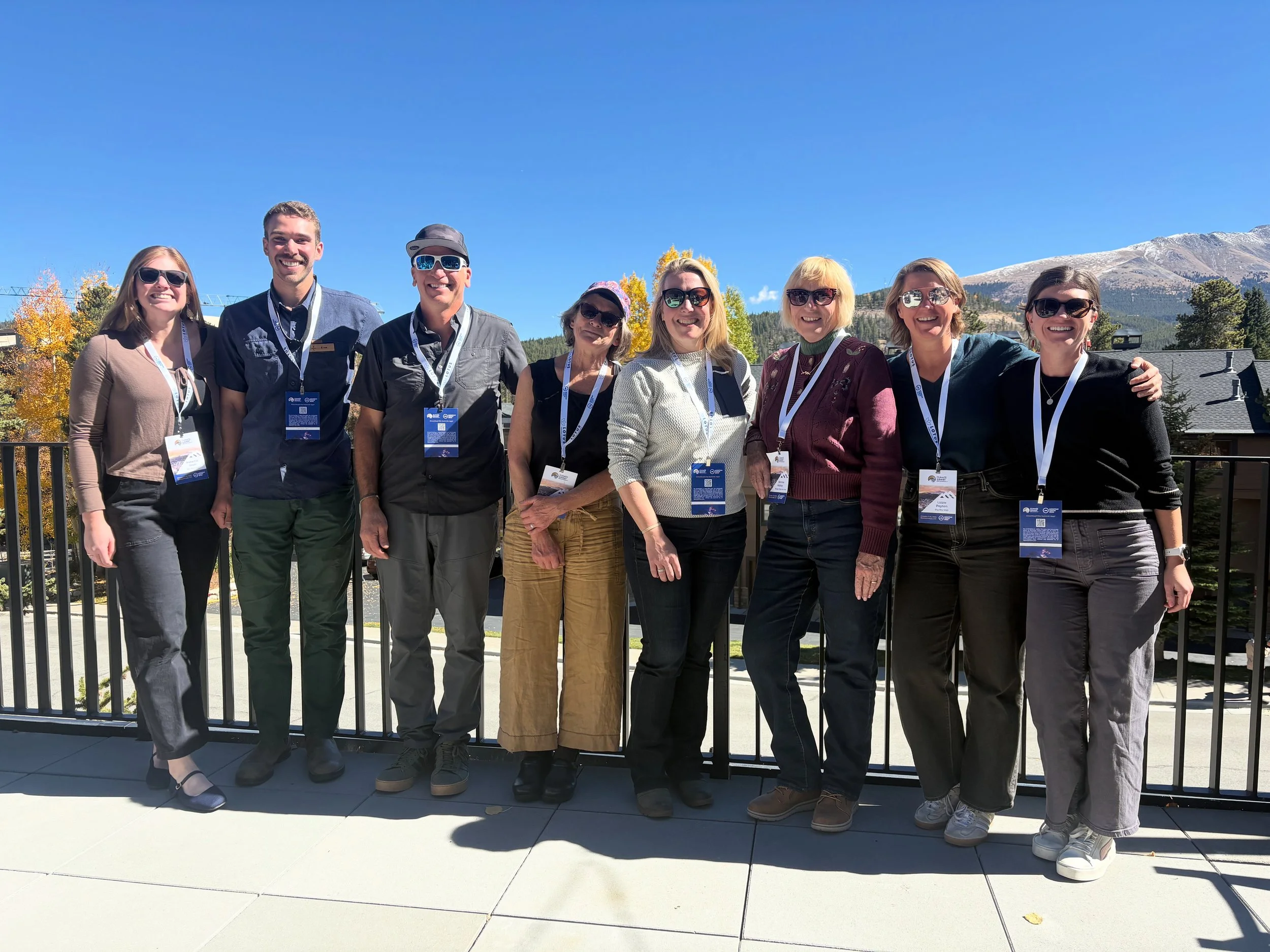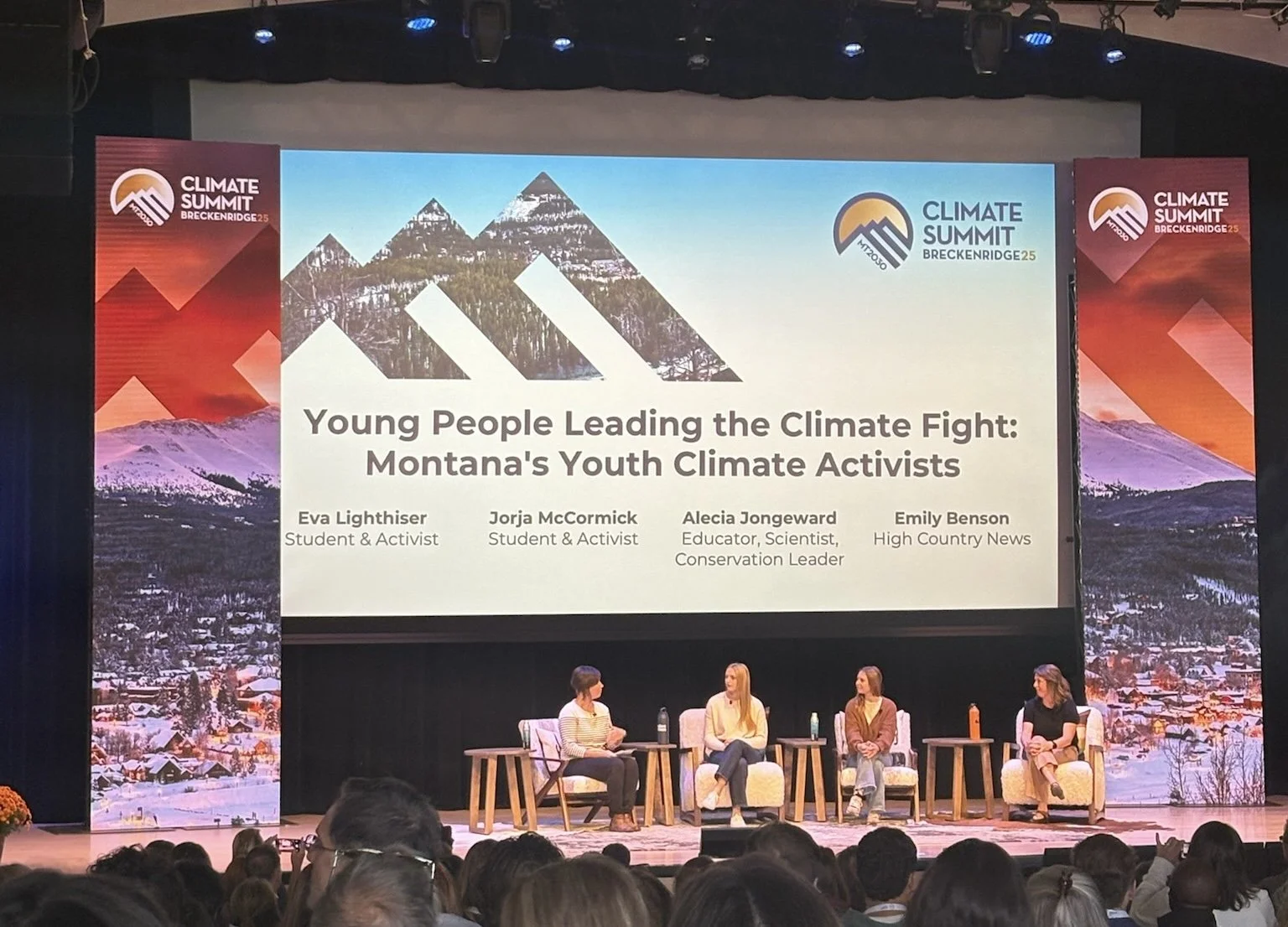MT2030 Climate Summit: Mountain Communities Leading the Way
Left to right: Natacha Sagel (Big Sky Resort), Evan Riegle (Yellowstone Club), Boz Boswell (Yellowstone Club), Amy Cilimburg (Climate Smart Missoula), Kristin Blackler (Bridger Bowl), Bonnie Hickey (Bridger Bowl), Lizzie Peyton (Big Sky SNO), Ali Chipouras (Big Sky SNO)
We had the privilege of attending the Mountain Towns 2030 Climate Summit in Breckenridge, Colorado. MT2030 is the premier annual gathering of leaders from mountain towns, resorts, and rural communities working together toward a shared goal: achieving carbon neutrality.
This year’s summit brought together partners from across the West, including our Montana friends from Bridger Bowl, Big Sky Resort, and the Yellowstone Club.
It was an inspiring reminder that while our communities may be small, the sustainability progress happening in mountain towns is mighty.
Montana on the Main Stage
The conference opened with an energizing mainstage conversation featuring youth climate activists from Livingston, Montana. At these conferences with dozens of leaders from other states, it can sometimes feel like our Montana team is a small fish in a big sea, but seeing our state represented on that stage reminded us that meaningful climate action is happening right here at home.
Top Three Takeaways from MT2030
1. It’s All Hands on Deck
Whether it’s youth activists, ski resorts, or hospitality companies, every sector has a role to play in reaching our carbon goals. The time to act is now.
Collaboration and a shared vision for sustainable, resilient, and affordable communities are what is driving mountain towns forward.
2. Ski Towns Are Climate Catalysts
Mountain communities have a unique ability to reach people while they’re connecting with the natural world. From powder days to trail runs, moments of awe can become moments of awareness.
We loved exploring Breckenridge and seeing how their thoughtful design supports sustainability in action. From its walkable core and free public transit to engaging visitor education, Breck shows how community design and communication can work hand in hand.
3. Climate Solutions Are Here, Now
We don’t have to wait for the future, the tools are already at our fingertips. We learned a lot about the technology and the how behind transitioning off fossil fuels. From geothermal systems and energy-storage innovations to grid-resilience strategies, communities are planning and investing in solutions that make them stronger and more adaptable to a changing climate.
We heard from Dr. Ramón Méndez, former Secretary of Energy of Uruguay, who shared how his country transformed its energy system beginning in 2005. Today, 98% of Uruguay’s electricity comes from renewable sources, a powerful reminder that when people say “the technology isn’t there yet,” it’s simply not true. If a country with fewer resources can achieve such an ambitious, long-term goal, why can’t we?
Carrying It Home to Big Sky
We left Breckenridge inspired and energized by the collective commitment of mountain towns working toward carbon neutrality and community resilience.
As one of the West’s top travel destinations, recently recognized by Expedia as the #1 trending destination for 2026 and SKI Magazine’s 2026 #1 Ski Resort in the West, Big Sky has an incredible opportunity to lead by example. With that spotlight comes both responsibility and potential. By continuing to invest in local climate solutions, strengthen partnerships, and engage residents and visitors alike in sustainability, we can amplify our impact far beyond Lone Peak.
Let’s keep learning from our peers, building momentum, and showing what’s possible when a small mountain town thinks big. The time for leadership is now; Big Sky is ready to rise to the challenge.





